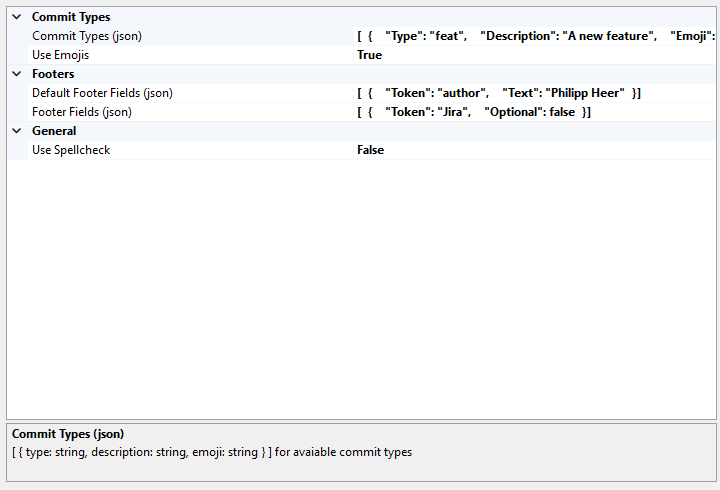A tool to help create consistent conventional commits. Not the first tool like this in existence and inspired by others, this extension has the most customizable features while still adhering to the conventional commit standards, at least as far as I could find. I hope it can help some people out there to save time; feedback is welcome. OverviewI like to have a structure in my code, commits, pipelines and, in general, the things I work with. But I want to put in the minimum effort to achieve that. Standards that provide the possibility of automatic analysis or tooling in general should be encouraged. At the same time, they should be easily accessible and not add an extra overhead, or as little as possible. The idea behind ConventionalCommits and the like is a great way to enable developers to write commit messages that are easily analyzed and offer many more integrations down the road. At the same time, it is quite annoying to write longer git messages, adhere to a standard, not miss a '!' or ':' somewhere, and if you fail, get your commit rejected because of it. With this tool I want to make it as easy as possible to write good and concise commit messages each and every time. In addition, the tool provides some QOL features like a spellchecker and the possibility to add emojis, inspired by gitmoji. Some of the features included are:
Get StartedAfter installation, you can open the window by going to "Tools" and looking for:
Down below is an example window of the conventional commit assistant. In this example a default footer field with the author is added to the commit message. In addition to that another footer is added where the token "jira" gets added with a provided ticket number. All of this can be changed and adjusted. After you click on the button, the generated message is copied to the clipboard so you can use it as your commit message.
The Options page under "Tools->Options" looks like this:
You can adjust the available commit types, decide if you want to add emojis and which, if spellchecking should be enabled, and if any default or other additional footer should be added. Before you begin, check the options page to adjust the tool for your needs. More information will follow. ContributeIt seems like the link to the repository isn't displayed on the sidebar, so here it is: GitLab Repository Release NotesVersion 1.1.4:
Version 1.1.3:
Version 1.1.2:
|





